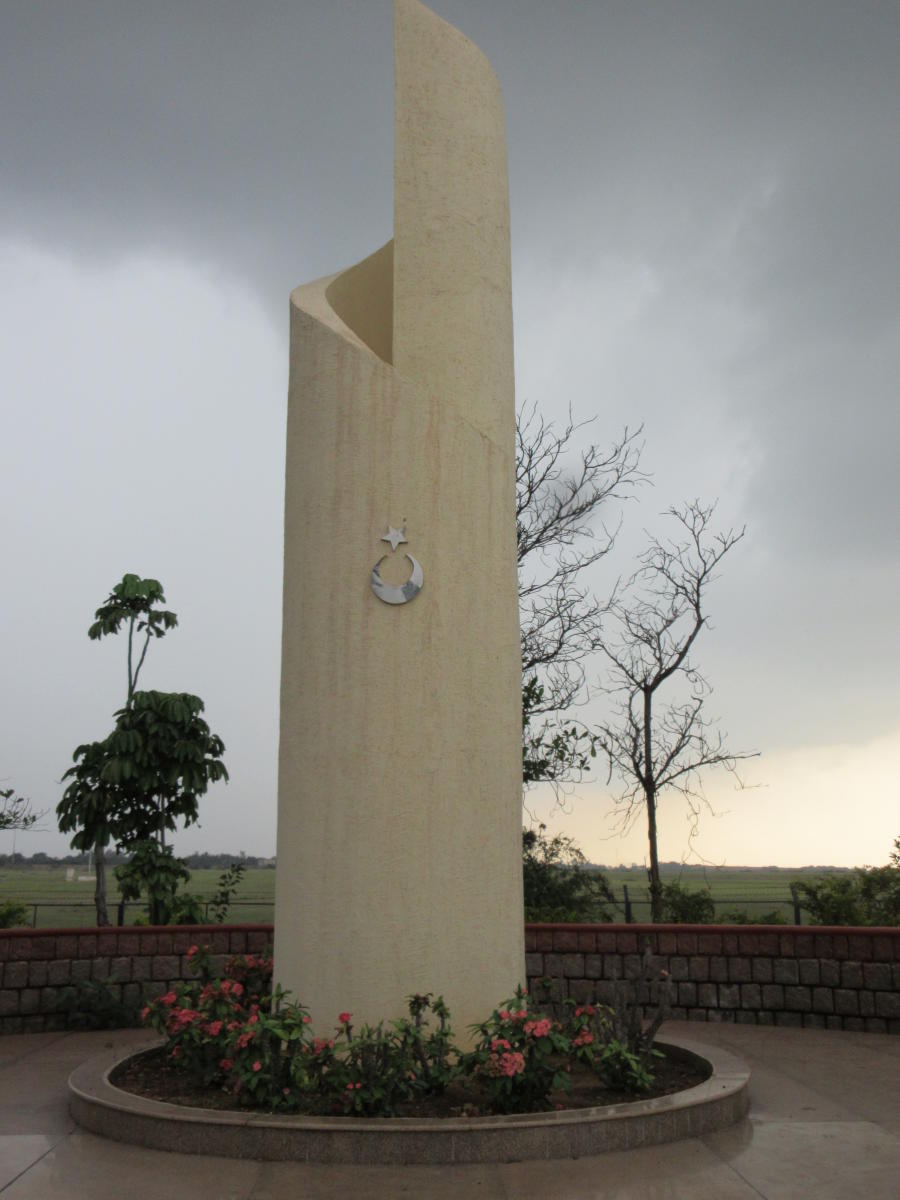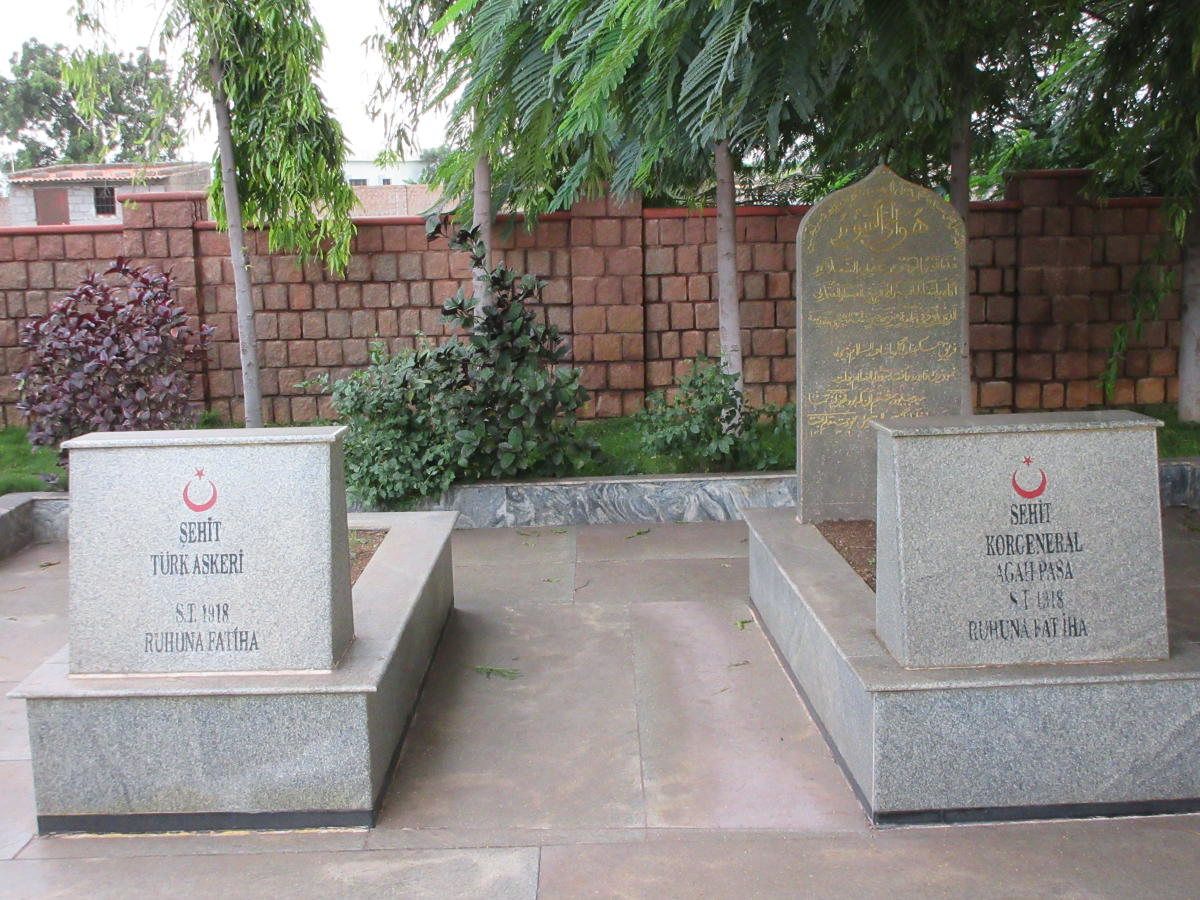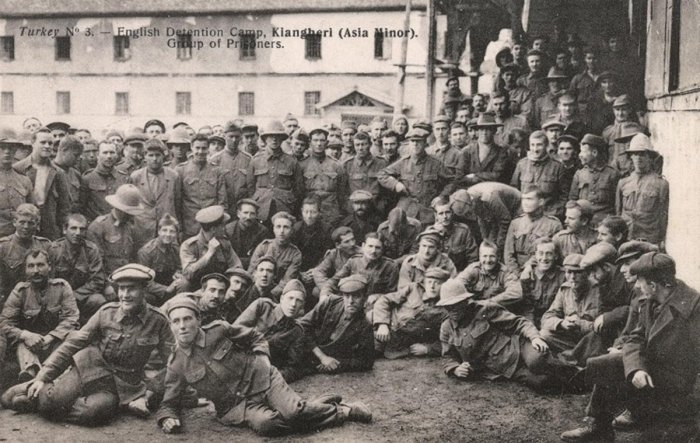Before I set out on a journey to Turkey, I decided to visit the Turkish Martyrs Graveyard Memorial in Ballari, built in memory of Turkish Prisoners of War (PoW) of the First World War.

The memorial is actually a spiral column built over a rectangular platform. Indian and Turkish flags flutter on both sides. The cylindrical spiral structure in white is surrounded by fountains, multi-coloured floral plants with Ashoka trees and rose plants on the border. The memorial is located close to the airport.
There are two marble-dressed graves on its left side. A memorial plaque on one of them refers to General Agha Pasha Abdussalam, the prince from the Ottoman ruling family of Turkey, buried there. The second one refers to Turk Askeri.
The epitaph on the memorial (it also has a Turkish translation) reads: “Here lie the Turkish martyrs brought to India in the year 1918 as prisoners of war during World War I from the Suez Canal front where they had fought. God bless them all.”
Turkey is a nation straddling eastern Europe and western Asia. Suez Canal is a sea-level waterway in Egypt connecting the Mediterranean Sea to the Red Sea through the Isthmus of Suez. And Ballari is in South India. These contradictions increased my curiosity to unearth the links.
A tale of tragedy and futility of war silently unfolded when I began digging deep into history. I realised that the memorial traces its roots to the brutal first world war.
Tale of tragedy
After about a century since the war ended, the memorial in Ballari stands tall silently reminding the greed of rich belligerents trying to get richer by inflicting large-scale violence, brutality and futility.
Austria and Hungary declared war on Serbia on July 28, 1914, over the assassination of a leader, triggering the first world war. A web of entangling alliances and the manoeuvrings of diplomats and generals dragged ambivalent nations into an unnecessary war.
The war pitted the Central Powers—led by Germany, Austria-Hungary and Turkey—against the Allies—led by France, Great Britain, Russia, Italy, Japan and the United States. The Allies won the war which claimed maximum lives in the history.
The Allies captured soldiers of rival forces, while soldiers of the Allies were taken captive by the Central Powers. About 1.5 lakh soldiers from Turkey were taken captive by the British forces. Turkey had detained 34,000 British soldiers.
The two sides had a common problem, lack of prisons to keep captive soldiers. And they were unwilling to keep rival soldiers in their motherland.
About 8,000 soldiers from Turkey, Germany and Austria, in British captivity, were placed in British colonies, in Egypt, India, Burma (now Myanmar).
Sumerpur in Rajasthan; Ahmednagar, Belagavi and Ballari in Bombay province; Kata Pahar in Bengal and Burma were chosen for the detention of prisoners.
Soldiers from Austria and Germany were interned at Ahmednagar, Christian citizens and women at Belagavi, and Turkey soldiers at Sumerpur, Ballari and Burma.
The British establishment shipped the prisoners from the port city of Basra in Iraq to Karachi and later sent them to Kolkata by train. One team was sent to Burma, while the second one to Sumerpur, Ahmednagar, Belagavi and Ballari.
The entire exercise was ironical and a large number of soldiers died on the way to Karachi from Basra. Hundreds of them were injured while being shipped. All these met with gory and gruesome deaths due to hunger, starvation and a lack of treatment.
Conflicting theories
Historians consider their journey as a procession of deaths. Many of them, who had survived starvation before reaching India, lost their battles against changing weather conditions and food.
Hundreds of them fell prey to infectious diseases as prisoners from different nations were housed collectively. In the Egyptian camps, a contagious eye spread relatively quickly blinding prisoners.
As many as 137 soldiers were kept at Allipuram Jail in Ballari. There are conflicting theories on how they died. One theory says a trigger-happy British officer massacred them en masse. The second theory quotes plague as the cause for the deaths.
Locals claim that there used to be hundreds of graves of Turkish soldiers in the area until the 1980s. A major part of the remains was erased during the expansion of the Bellari Aerodrome.
Commemorating sacrifice
The Turkish Embassy in Delhi negotiated with the Indian government for a memorial to commemorate the sacrifice made by the soldiers for the nation ten thousand miles away from their motherland. As a result, the Turkish Martyrs Graveyard came up in 1980.
Since then, the Indian and the Turkish flags are hoisted twice a year – on August 15 and January 26.
Details of Turkey soldiers in Ballari come from the lone report of Red Cross Society. A high-level committee at the Geneva convention in 1971 decided to send the Society teams for reports on charges of brutalities meted out to soldiers at camps.
A team visited Ballari, Egypt and Myanmar as part of the decision. The team members visited Ballari on March 17, 1971, and submitted a report regarding the medical facility, food, physical and mental health of the prisoners. The most common complaint from the prisoners was that they hardly heard anything from their family members.
Due to isolation, the futility of war and uncertain future, most of them became mentally ill. They had converted a hall meant for prayer to play games. They also used the hall as a coffee house, played Dice Chess Dominoes, consumed Turkish coffee without milk and demanded books in the Turkish language for reading.
In the end, the report expresses confidence that the Turkey soldiers would surely say that the British establishment took proper care of them in India once they reached their hometowns. However, it is not known even today if they returned to their hometown.
The ordeal of soldiers from England and India in Turkey prisons was no different. There are memorials all over the world commemorating sacrifices made by foreign soldiers. Most of these soldiers laid down their lives for the British imperialism.
These memorials never reveal why wars were fought; why soldiers were killed; why they were shipped and interned in different continents; what happened to their families after their deaths. These memorials also mirror inhuman acts of war.
(Translated by Jagadish Angadi)
source: http://www.deccanherald.com / Deccan Herald / Home> Spectrum> Spectrum Top Stories / by Rahamat Tarikere / December 19th, 2019










